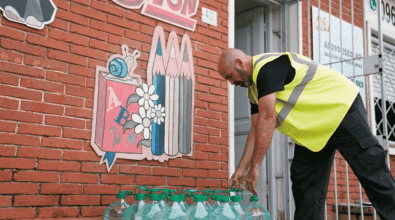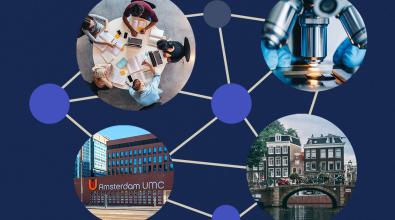In Tulsa, volunteers mine data to help city government make better decisions
When Tulsa Mayor G.T. Bynum came into office two years ago, he charged James Wagner with stepping up the city’s use of data to make decisions. There were plenty of datasets to use: on crime, blighted properties, pet licenses — you name it. What Wagner lacked was people to analyze the data and find actionable insights. So he turned that analysis into a volunteer activity and asked if people in the community with a knack for numbers would help. Dozens of them answered the call. They became the Urban Data Pioneers — and, between volunteers and city employees, they number more than 120.
City departments and nonprofits pitch the Pioneers with problems they want to solve, and bring datasets they think could help. Groups of volunteers and city employees then break into teams and spent 12 weeks scouring the data for insights. One team’s exploration into the linkages between crime and blight led to a new focus on abating nuisance properties. Another team is now looking to see if weather patterns affect the volume of 9–1–1 calls in a way that would suggest the city’s call center should adjust its staffing levels. “These are real problems that someone in the city has scoped out, and people are wanting to get involved,” Wagner said. “If you get the right people engaged, this can be tremendously valuable for cities.”
Cities of Service recently gave the Urban Data Pioneers program an Engaged Cities Award. Learn more about the program by watching this video, and reading this case study as well as this blueprint for replicating the program.
Bloomberg Cities talked with Wagner about the program and how it’s set up.
Bloomberg Cities: Where did the idea for the Urban Data Pioneers program come from?
James Wagner: It was actually someone from the Auditor’s office who came up with the idea of asking people from the community who were doing data analysis full time in other industries to come and assist us with this on a volunteer basis. We figured we could get the data sets ready and cleaned, and then turn to the community for help with the analysis.
Who in the community are you reaching out to?
At first, we were really only reaching out to people in organizations like Code for Tulsa or Tulsa Data Science. But now, in our fourth cohort, we’re in contact with people from all walks of life. We have university students, professors, data scientists, and people with no data experience who are just looking to learn.
So you bring a group of volunteers together. What do they do?
We start by asking city departments and the nonprofit sector if they have something they think would be an interesting problem that we could use data analytics to help solve. They then send us a short description of what they are looking for and whether or not they know of a data set that we could use for the project. We work with them on the front end to scope out the projects before we even get the teams together. We want to solidify the problem they are looking into and make sure there is data that can be used to address it.
Projects can come from anyone in the community. For example, a Legal Aid organization that works with low-income residents came to us to look into eviction, which is a big problem in Tulsa. They wanted to know if there were any data sets that would help them identify people at risk for eviction, so they could help them. We figured maybe our water utility data could be a good source for this, because we could tell when utility payments don’t get made. We also pulled the public court data that shows who has been, or is being, evicted — and where. And now we have a team working on combining the two data sets, linking addresses, and figuring out who might be at risk for being evicted in the future.
What roles do you have on these teams?
Every project has to have a few elements. One is a project manager, who doesn’t have to be a data expert, but does have to be someone who is willing to convene the team, lay out the tasks and the timeline, and keep the project on track for the 12 weeks they have to work on it. They also need to have a data analyst who can pull the data into Python — a programming language — or at least Excel, and use some sort of data analytics tool to pull it all together.
The last two team members are a subject-matter expert, someone who really knows what the data means. And a storyteller, which is something we’ve recently added. What we’ve found in the previous cohorts is that sometimes there were some really great analytics, but it was hard to understand what the takeaway was. So we’ve required that every team have a storyteller now. Their role is to interpret what the data analysis is saying, and making sure there are actionable steps at the end of it.
I do have a data analyst who we hired in my department just a couple of months ago, but he’s helping more with prepping the data sets, which is a new thing we’ve been able to do. He pulls the data together and makes sure there is no personal information in there, so that privacy is protected, before giving it to the teams to work with.
And how do these teams work?
When we kick off, all of the clients make a pitch: They say what the project is, why they want to do it, and what datasets they think they can use. And then people join teams based on what projects they are interested in.
Every team is different. We take the approach of giving these teams a lot of autonomy. While we don’t mandate when they meet, we do give them a place to meet in City Hall, if they want it. And we give them a Slack instant messaging channel. Each team has a different channel, but they can see each other’s work as well so there is a little bit of cross-pollination that happens. They are basically communicating every day about what’s happening on each project through Slack.
They have to touch base with the city department or nonprofit they are working with because sometimes the scope needs to change due to the data not being what we thought it was when we first started, or because something needs to be adapted. I do have suggested milestones for them, but for the most part, they are just working on their own. And that was one of the things I was a little surprised by. I thought we would have to be more hands-on. But we’re not, and I really think it works better because it gives the teams ownership.
We always ask for feedback at the end of each cohort so we can learn and adapt. One critique we’ve gotten is that we ask a lot of our teams, but don’t provide enough in return. They really want to learn as a part of this program, so we’ve subscribed to Data Camp, so that people can actually learn data-science skills while on the project.
[Read: Unleashing the creativity of city employees]
What do you think you’ve tapped into here in terms of people volunteering to geek out on city data?
We haven’t asked why people are doing this. But these are real problems that someone in the city has scoped out, and people want to get involved. It’s just like any other volunteerism: You have something that you can offer and in this case it’s data analytics skills.
In regards to university students, I think they’re excited about learning with real data. These aren’t canned problems that a professor gave them. And I think professors appreciate that as well — that these are real problems and not something they had to come up with or download from the internet without any context.
Do you have any lessons for cities who might want to create their own version of this?
If you get the right people engaged, this can be tremendously valuable for cities. We do put a lot of time in on the front end to scope these problems, but, like I said, we just kind of let these teams go. And there is always a little risk that a team might not deliver. But that’s a risk we are willing to take.
The biggest barrier for us has been the practicality of getting access to the data sets and making sure that there’s no sensitive information in them. That can be a real time commitment on our part, but it’s not difficult to do. In fact, most cities probably have someone in their IT Departments who could do it for them.
This is not an overwhelming commitment of resources. We did it with no resources. We completed three cohorts before we even had a data analytics person. Sometimes, the lack of resources is what really drives an innovative idea.
What are some of the findings the teams have made?
One of the teams was looking at the connection between blight and violent crime. We had never really laid those two on top of each other, so it was interesting because we could really see that these two things were certainly correlated. And that led to one of the projects that we are working on now, where we are looking at how we can make our process for doing abatements on some of our nuisance properties — like high grass and weeds, which are big problems in the summer — more efficient.
Another project looked at all the variables in the census data related to per-capita income, which was one of the things that the mayor really wanted to look into. And as you could imagine, education is really the highest correlation. When we looked a little more closely, we saw that having advanced degrees, and college degrees, really helped. As a result of the findings, we started an effort with the education policy people in City Hall to try and increase enrollments for financial aid for higher education.
[Read: Unleashing the power of public prototyping]
What new projects are the teams working on?
We have a 911 project that a team is working on now, and the hope is that we’ll be able to see what factors lead to an increase in call volume. For example, should we expect that we are going to have an increased volume in calls when it’s raining? So they are looking at how we connect weather data to 911 call center data. Right now, our goal is to answer 90 percent of calls within 10 seconds, but we aren’t meeting that standard. If we can figure out what factors contribute to high call volumes, we can adjust our staffing.
We have another team that is looking into how zoning correlates with sales tax generation. Oklahoma is unique in that cities rely primarily on the sales tax, which is very volatile, so we pay a lot attention to that. This team is looking at what we can learn from zoning categories — like whether certain ones work better for sales tax generation than others. So that could potentially lead to a policy change.



